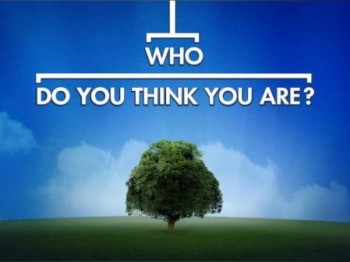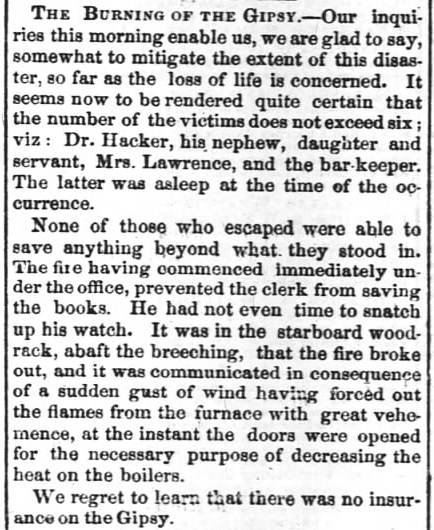by Lisa Cooke | Dec 27, 2013 | 01 What's New, British, Conferences
It’s always a joy for me to get to get out and about and meet readers and listeners in person. In July 2014 there’s a wonderful opportunity for us to get together in person, talk genealogy and experience the joy of travel: the Unlock the Past Cruises for their 2014 British Isles Cruise!

I’ll be joining eight other incredible genealogists to bring cruisers an exciting assortment of family history classes aboard the beautiful Marco Polo ship (right). Check out the Presenters page
You’ll have around 40 topics to choose from, held mostly in the evening so there will be loads of time to explore the breathtaking landscape.
Itinerary:
- day 1 – depart Tilbury, London – 6pm (boarding from 12.30pm)
- day 2 – at sea
- day 3 – Invergordon, Scotland – 7.30am-10pm
- day 4 – Kirkwall, Orkney Islands – 7am-6pm
- day 5 – Stornoway, Outer Hebrides – 7.30am-10pm (transfer to shore by tender)
- day 6 – Tobermory, Isle of Mull – 7.30am-4pm (transfer to shore by tender)
- day 7 – Dublin, Ireland – 8am-5.45pm
- day 8 – St Mary’s, Isles of Scilly – 9am-6pm (transfer to shore by tender)
- day 9 – St Peter Port, Guernsey – 7.30am-6pm (transfer to shore by tender)
- day 10 – Honfleur, France – 9am-5pm
- day 11 – arrive Tilbury, London – 9am
My understanding is that this cruise is filling up very quickly so if you’re interested be sure and click here for more details.
by Lisa Cooke | Sep 16, 2013 | 01 What's New, Ancestry, Who Do You Think You Are?
 The final episode of TLC’s first season of Who Do You Think You Are? came with more than just an extra helping of ancestral drama. Along with the end of the season came the welcome announcement that WDYTYA? will return in 2014 on TLC.
The final episode of TLC’s first season of Who Do You Think You Are? came with more than just an extra helping of ancestral drama. Along with the end of the season came the welcome announcement that WDYTYA? will return in 2014 on TLC.
First, the final episode recap: American actor Jim Parsons explored his paternal line and discovered one ancestor who was lost in a tragic accident–and another who narrowly escaped death by guillotine.
The Ancestry.com research team reports, “When we went digging into Jim Parsons’ family tree we found his third-great-grandfather was Jean Baptiste Hacker, a phy sician who was raised in New Orleans but moved to Plaquemine, Louisiana, after starting his medical career. Just a few years later, Dr. Hacker, along with his daughter Leocadie and his nephew, was killed in a tragic fire on board the steamboat Gipsy in December 1854.”
sician who was raised in New Orleans but moved to Plaquemine, Louisiana, after starting his medical career. Just a few years later, Dr. Hacker, along with his daughter Leocadie and his nephew, was killed in a tragic fire on board the steamboat Gipsy in December 1854.”
They documented the accident through an article from New Orleans paper the Daily Picayune (digitized at Newspapers.com and shown here):
Another line of research takes Jim’s ancestry back to France, where he learned one of his forebears was an architect to Louis XV. “The timing of Louis Francois [Trouard]’s appointment is significant: 1787 is only two years prior to the French Revolution. Four architects were executed during the Revolution, and another 25 were imprisoned. Yet Louis Francois escaped Republican retribution….”
“At the Chapelle de la Providence, a structure designed by his ancestor, Jim discovers the startling truth: Louis Francois had good revolutionary credentials, including houseguests such as Benjamin Franklin and John Adams.”
Along with that riveting last episode, TLC just announced it will bring back more of the same next season. On September 10, Digital Spy reported that 2014 will see 10 more episodes. Celebrity guests haven’t been announced yet, so stay tuned! We’ll keep you posted on future developments.
Meanwhile, TV watchers, mark your calendars for the American version of Genealogy Roadshow, the PBS show scheduled to debut next week.
by Lisa Cooke | Sep 19, 2013 | 01 What's New, African-American, Ancestry, DNA, Immigration
AncestryDNA announced last week that it has been able to identify six unique historic populations in West Africa. It’s a breakthrough they call a “finer-resolution genetic ethnicity estimate for individuals with West African ancestry.” They have even used this technology to start connecting the dots between those groups and millions of African-Americans whose ancestral paper trail was annihilated during the era of slavery.

For this latter development, the AncestryDNA team uses the “cluster genealogy” approach: the concept that people from the same location often migrated to the same areas. Of course, slavery forced apart families and other natural migration groups, both in Africa before the crossing and in the U.S. or other destinations. And the few records that remain of many of these folks and their enslaved descendants don’t include full names, place of origin or other data we rely on to make family connections. (Learn more about how to research African-American roots in Genealogy Gems Podcast Episode 159 with Dr. Deborah Abbott.)
It’s encouraging to read that AncestryDNA has had some success hooking up regional groups of African-Americans with specific areas of Africa. “Though this project is still in its infancy, the science team has made some progress,” AncestryDNA reports. “First, we looked at the birth locations of individuals in the trees of all African Americans. Then, we looked for locations where, relative to all African Americans, there appeared to be an over-representation of birth locations in trees of individuals with a particular West African ancestry. For individuals with Senegalese genetic ethnicity, we found what seems to be an over-representation of birth locations in South Carolina and Georgia in the 1700’s and 1800’s.”
by Lisa Cooke | Aug 15, 2013 | 01 What's New, Ancestry, Canadian, Census, Immigration
The much-anticipated (but little-publicized) 1921 Canadian census is now online and available for browsing at Ancestry.ca. They anticipate releasing an index later this year.
On June 29, I blogged in detail about the 1921 census. Check out that post for an image from the census, the questions it included and the significance of the 1921 census as it captured a new generation of immigrants to Canada.
When you click on the first link above, you’ll see that Ancestry.ca’s collection of Canadian census data goes back to 1851. Check out my post above to learn about online data back to 1825. It’s getting easier all the time to find your Canadian ancestors online!




